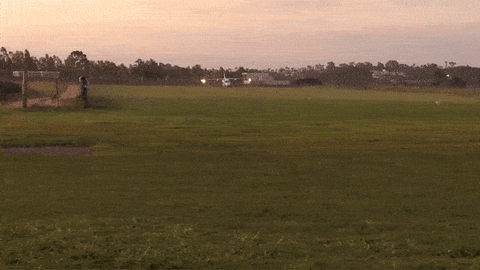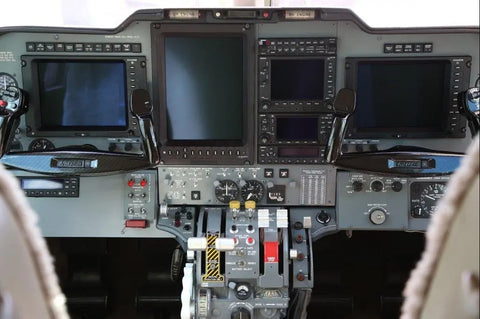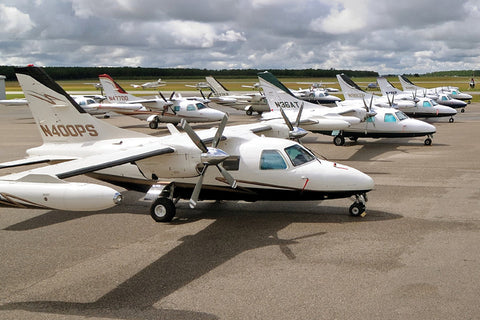The Mitsubishi MU-2: A Closer Look
In the dynamic world of aviation, certain aircraft stand out for their unique blend of performance, versatility, and quirkiness. Among these, the Mitsubishi MU-2 series holds a special place, renowned for its distinctive design, speed and unconventional handling qualities. In this article, we'll delve into the history, features, and enduring legacy of the Mitsubishi MU-2.
A Legacy Takes Flight:

The MU-2 made is first flight in September 1963. Production of the MU-2 ceased in 1986 with a total of 704 aircraft manufactured in Japan and San Angelo, Texas, in the United States. The aircraft went through many upgrades throughout the years until its final two iterations, the long body MU-2 Marquise and short body MU-2 Solitaire.
Performance Prowess:

One of the defining characteristics of the MU-2 series is its impressive performance capabilities. Equipped with two Honeywell TPE331 turboprop engines, these aircraft can reach cruising speeds of up to 320 knots, allowing for swift and efficient travel over both short and medium distances. The MU-2's ability to operate from shorter runways adds to its versatility, making it suitable for a wide range of airports and airstrips.
Adaptable Design:

The MU-2's adaptable design makes it a standout choice for various missions, from executive transport to cargo hauling and medical evacuation. Its pressurized cabin provides a comfortable environment for passengers and crew, ensuring a smooth and enjoyable flight experience. The aircraft also has the ability to fly off of grass strips and unpaved runways.
Innovative Avionics:

Over the years, the MU-2 series has undergone several upgrades to its avionics systems, keeping pace with technological advancements. Modern cockpit enhancements contribute to improved situational awareness, navigation, and communication, aligning the aircraft with contemporary aviation standards.
Safety Concerns:

Attracted to its speed capability, the MU-2 was a favorite choice for upgrading aircraft owner/operators. Unfortunately, many of them were not properly trained on the MU-2 and subsequently there was a flurry of MU-2 crashes. Because of this, the FAA issued a special federal aviation regulation (SFAR 108) that mandated type specific training to fly an MU-2. Once that rule was implemented the rash of MU-2 crashes ended. Today, numerous MU-2's are flown daily across the globe with accident rates no different than any other twin-turboprop.
Enduring Legacy:

The Mitsubishi MU-2 series has not only stood the test of time but has also cultivated a dedicated community of operators and enthusiasts. Despite the evolution of aviation technology, the MU-2's distinctive features and enduring reliability continue to make it a sought-after choice for those in search of a capable and fast twin-turboprop aircraft.
Conclusion

Even though the MU-2 is a 61 year old design, it can still keep pace with the modern turboprops manufactured today. The exceptional build quality and continual product support from Mitsubishi Heavy industries makes the MU-2 a truly exceptional aircraft even today.

